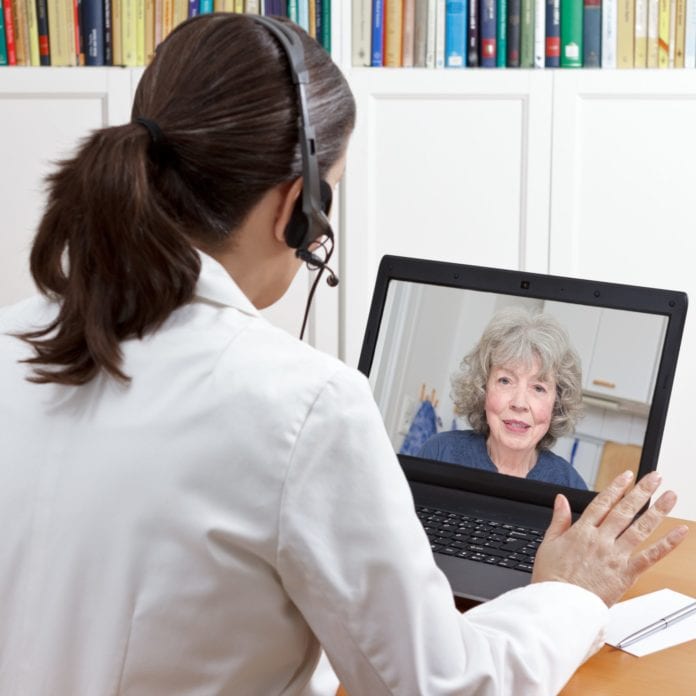Integrating 5G network technology and today’s digital healthcare technology will improve patients’ access to doctors, increase the availability of the latest healthcare technologies, improve patient outcomes, and increase the efficiency of healthcare delivery.
To improve patient access and patient outcomes, and accelerate the acquisition of large amounts of medical data for future research, the healthcare industry has undertaken initiatives in remote patient monitoring, telemedicine, robotics, and data collection and analysis.
The mobile industry is doing its part with the ongoing deployment of ultra-fast 5G networks, which support the the near-instantaneous transmission of huge amounts of data, and rolling out new, more powerful mobile and IoT devices.
Wireless operators are investing billions to build the infrastructure needed for widespread 5G coverage. This will reduce the effective distance between patients and their healthcare providers, increase access to care, and revolutionize how healthcare is delivered. There will be extreme demands for 5G coverage, and for very high network reliability. Access to a 5G network less than 90 percent of the time is insufficient for medical mission-critical functions.
What does 5G mean for healthcare?
Connecting Smart Devices and Medical Data
The speed, bandwidth and connectivity promise of 5G will serve as the basis of reimagining how the healthcare industry approaches wellness. By collecting data continuously, rather than at a single point in time, 5G will allow the healthcare provider and the patient to recognize trends early, and identify issues more accurately than ever before. As the healthcare industry drives toward more personalized care, 5G can help to incorporate more data into the decision process, leading to more successful outcomes.
Wearables are wireless devices capable of monitoring and transmitting medical data, with the potential to give patients ownership of their healthcare decisions, untethering them from their doctors’ offices. These can be the early warning systems, identifying problems proactively while the patient goes about living their normal life.
Wearable technology will also be useful in helping patients manage chronic conditions, enabling healthcare professionals to continuously collect and analyze complex streams of data, for example, data from blood glucose monitors, pacemakers, insulin pumps, CPAPS, or sleep monitors. These devices will allow doctors to determine if a patient’s symptoms are either improving or deteriorating, and pinpoint the possible causes, all in a shorter period of time than current technology and scheduled visits to the doctor’s office allows.
Medical Imaging
One of the real virtues of 5G-enabled digital medicine is support for remote access between patients and their doctors. High-speed transmission of virtually any type of medical image is in use today, enabling doctors to view these images as soon as they are captured. This will have the effect of expanding the talent pool, bringing highly specialized and responsive health expertise to communities where they may otherwise be lacking.
Wireless’ role in diagnosis
Currently in use, artificial intelligence (AI)-based decision support systems are giving physicians access to the latest knowledge on patient diagnosis and treatment. Now broadly accepted, it’s a given that AI will play an even more important role in healthcare.
Ultimately, these systems rely on the collection and retreival of huge amounts of data. The intensive data processing needed to drive AI technology, and the transmission of the huge amounts of data required to make good and accurate decisions, requires high-bandwidth, and low-latency networks, which 5G offers by its very design.
Remote Medicine
The real prerequisite for the widespread use of remote medicine is the availability of networks with the necessary bandwidth, latency and reliability. Receiving and viewing medical images in real time, surgeons will be able to use tools such as Augmented and Virtual Reality (AR/VR) and robotics to conduct procedures locally or from great distances. This would enable experienced doctors to advise and assist in areas lacking access to certain medical specialties. There are already robots assisting in procedures in operating rooms in the US, but they haven’t yet been integrated with advanced telecommunications networks, except in a few pilot trials.
Accelerating the 5G healthcare promise
The challenge is to expand the integration between medical technology and 5G, and to make wearables a reality. There are a number of steps needed to realize the 5G healthcare vision: assuring interoperability through standardization, continuing to deploy 5G infrastructure, and working jointly to educate and solve the needs of the thousands of clinics and hospitals across America that are lacking in wireless expertise.
Standardization and Interoperability
With the complexity of interconnected networks and devices, it is crucial that the wireless and healthcare industries work with standards bodies to ensure data security, privacy and interoperability. Maintaining standards between networks sharing data, and the easy and reliable exchange of trusted information, is vital for the success of 5G. Without them, we won’t realize the $4 trillion to $6 trillion economic opportunity that we envision.
Reimbursement policy
Government officials need to review their current reimbursement policy in light of the new advances in digital medicine. Currently, it is difficult for healthcare providers to receive reimbursement for telemedicine, video conferencing, or home health therapy. In Maryland, for example, while doctors and patients are using telephone and videoconferencing to see patients during the COVID-19 virus, the largest health insurance carrier in the state is only paying doctors a $20 flat fee for telephone consulations regardless of the length of the call.
Driving a better patient experience
Integrating 5G and healthcare technology will improve patient’s access to doctors, increase the availability of the latest healthcare technologies, and monitor and collect diagnostic data from patients as they go about their lives, driving greater efficiency of healthcare delivery and an improved patient experience. Mobile devices, remote monitoring, and the instantaneous transmission of huge volumes of data will result in a dramatic increase in the numbers of patients receiving treatment remotely, reducing the distance between patients and their healthcare providers, broadening access to care, and revolutionizing the way healthcare is delivered. The implications are nothing short of staggering.

